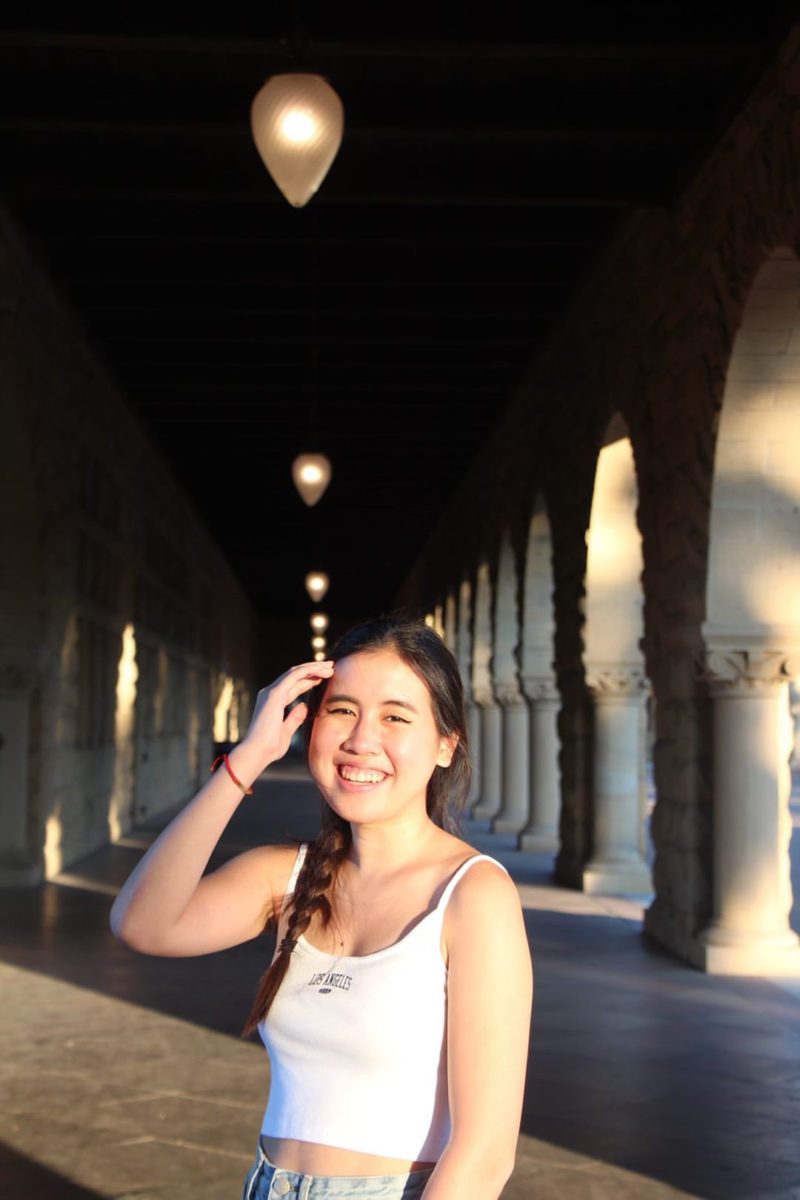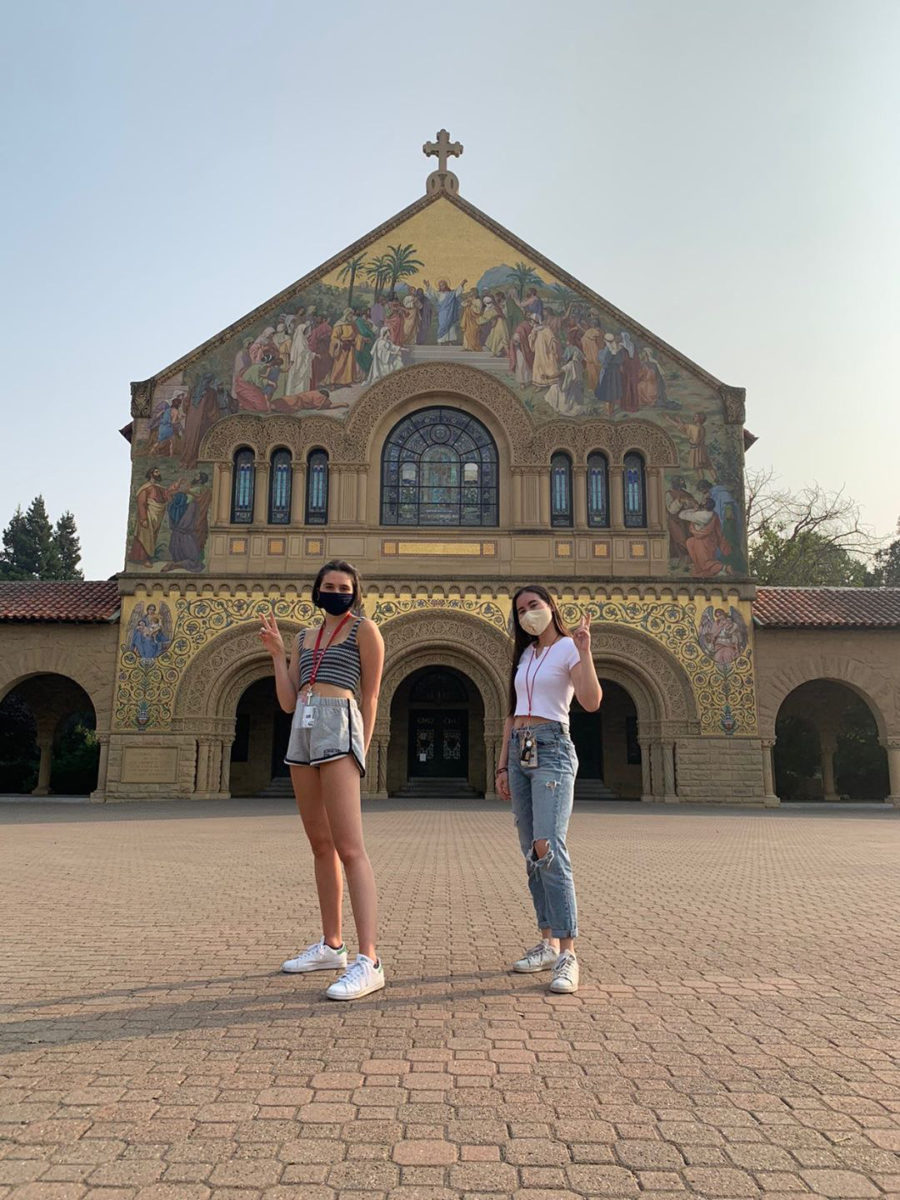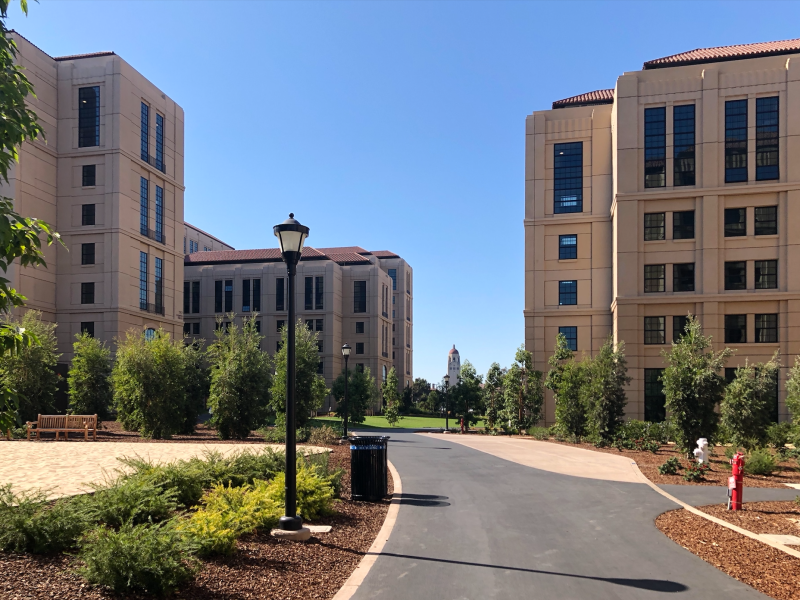Mario Anthony Pacheco ’24 had not stepped foot on Stanford’s campus until move-in day.
The drive from his hometown of Santa Paula, CA, a river-side city just north of Los Angeles, was too costly and lengthy for a short visit. But after Pacheco received approval to live on campus this fall, he, his uncle and his brother awoke around 4 a.m. to embark on the approximately seven-hour drive to Palo Alto.
By the time they arrived, they were overwhelmed by the expanse of the campus and the environment’s distinct features.
“The entire time we were just lost,” Pacheco said. “Everything was just so big. There are so many trees that there just aren’t in the LA area. And the people look very different here than in SoCal.”
Pacheco is one of about 600 undergraduate students living at Stanford this fall, according to University spokesperson E.J. Miranda. About one-third of these students are frosh. Though the first-year experience is distinct from years past, frosh share a deep sense of gratitude for the campus that they now call home.
Due to COVID-19, only those approved for housing based on special circumstances like unsafe home environments or visa challenges may reside on campus this quarter. For winter quarter, these criteria have been expanded to include academic accommodations.
For students like Pacheco, who has faced housing insecurity, the opportunity to live at Stanford is a cherished one. When he first decided to attend the University, he was living with a guardian who did not support his choice. He was ultimately kicked out of the house.
“For some months I didn’t have anywhere to live,” Pacheco said. Though he had experienced homelessness before, this time was different. He had never been this alone.
“Just the fact that I am able to have some place at least semi-stable for the next few years means a lot to me,” he said. “I just feel really grateful to be here at all.”
Though the frosh residing on campus come from distinct backgrounds, many share these feelings of gratitude. Audrey Pe ’24, who is from Manila, Philippines, took a gap year to work on her nonprofit that celebrates women in technology before coming to Stanford.
“I always remember how long the journey took to get here, whether it’s the gap year or the fact that my visa appointment got rescheduled three or four times,” she said.
The challenges of the COVID-19 pandemic, coupled with the uncertainty surrounding the Trump administration’s student immigration policies, has made this year particularly distressing for international students. Nevertheless, for Pe and her family, the decision to come to campus was clear.
“My parents knew that by sending me here, I’d have so much more freedom to grow and learn and explore,” she said. “And that’s what I’ve been getting so far.”

Still, living at Stanford during a global pandemic has not come without its hardships. While on campus, Pe experienced the death of a family member. She couldn’t go home for the funeral — the 14-hour flight, combined with a mandatory two-week quarantine, wasn’t feasible for her to make it in time and return to campus.
“That’s a circumstance that really made me realize that while I feel like I’m living my best life here, at the same time, I did have that conflict where I feel like I should be there for my family. And it’s hard that I can’t,” she said.
With a significant majority of the class living away from Stanford, the frosh community on campus is far smaller than usual. Most undergraduate students are housed in Escondido Graduate Residences (EVGR) Building A, with frosh populating much of the first and second floors. For the Approaching Stanford team, which coordinates New Student Orientation (NSO) and supports the transition of new undergraduate first-year and transfer students to Stanford, these conditions have required the team to reimagine the frosh experience.
“This year is not ideal by anyone’s account,” wrote Diana Suedbeck, Approaching Stanford’s new student programs manager, in a statement to The Daily. She added that staff have been working since April to re-invent their on-campus services and will continue to adjust their plans as more information becomes available.
Even amid a public health crisis, frosh have found innovative ways to soak in the wonders of their new home and take advantage of Stanford’s famed California sunshine. Pe celebrates the weather by taking nighttime jogs around campus with her suitemate. She recalled one particular night when they marveled at the quietness and utter beauty of Main Quad.
“We were really reflecting on how crazy it was for us to be there,” she said, pointing out that she and her suitemate, Tri Hernandez ’24, are both international students who did not expect to attend college in the United States. “There’s just so much magic in being here.”
“We’re really just trying our best to make the most out of what we have right now,” she added.

Tom Nguyen ’24, who hails from Nashville, Tenn., also spent his first week at Stanford exploring with newfound friends.
“I’d pick a direction and grab a couple of mutual friends and we’d all just go around, walking — socially distanced, masks-on,” he said.
Amid social distancing guidelines and testing measures, outlined in the University’s COVID-19 Campus Compact, frosh have found new ways to forge social connections. Nguyen and Pe said extroversion is especially valuable in a socially and physically distanced environment.
A willingness to be outgoing, Nguyen recalled, was something that he learned early on would be essential in his quest for community. According to Jinhyo Huh ’24, sitting in a socially-distanced circle outside is a frequent activity among frosh.
In accordance with public health guidelines, the University has banned most indoor and outdoor gatherings. The administration reported on Thursday that it has received 139 public health violation reports, though none have been forwarded to the Compact Review Panel. Students have also reported large gatherings, many of them among frosh.
For some students, the reports provide even greater motivation to abide by campus health and safety guidelines.
“We don’t want to mess up the opportunity that we have to be on campus,” Pe said, noting that the University’s mandatory testing system — students are tested weekly — provides an additional sense of security.
Though the COVID-19 campus environment is dramatically different from years past, it is the only Stanford that frosh know. That truth, some believe, is in many ways a blessing.
Pacheco said that he has talked to students who had experienced life on campus prior to COVID-19. “They say that it’s really sad because there’s so few people outside, and you don’t see people really talking to each other or interacting that much,” he said. “It might just be me, but compared to what I was just dealing with not even a month ago, I can’t think of a better situation to be in.”
Pe, Nguyen and Huh echoed this sentiment, noting that they remain overwhelmed by and in awe of Stanford — even amid such distressing global circumstances.
“As freshmen, we’re trying to make our own memories here,” Pe said. “I personally think it’s a very liberating thing.”
Contact Georgia Rosenberg at georgiar ‘at’ stanford.edu.
This article has been updated to include that about 600 undergraduate students are currently living on campus. It has also been corrected to reflect the duration of the drive from Santa Paula, CA to Stanford and to clarify that students living on campus are tested for COVID-19 weekly, not twice a week.
